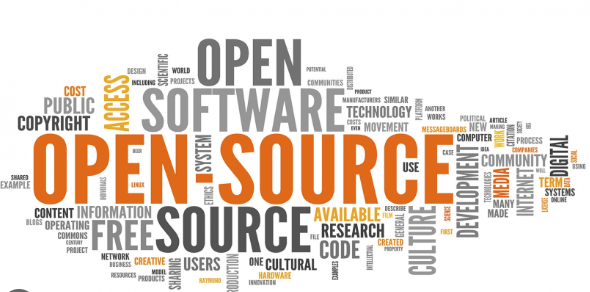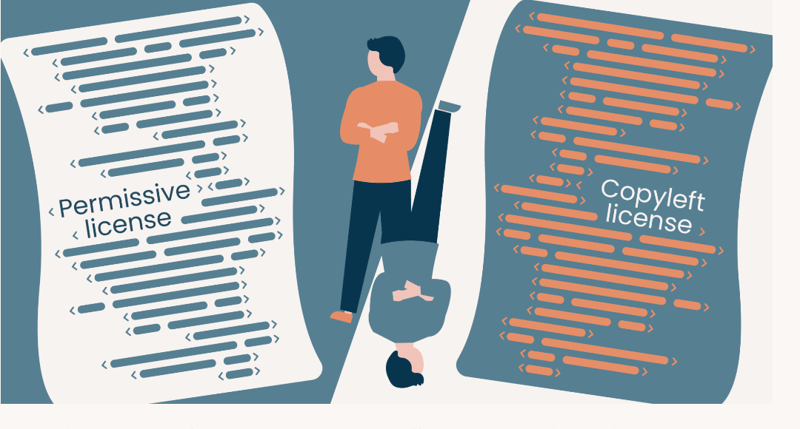In the realm of software development, open-source licenses serve as the bedrock for collaboration, innovation, and the free exchange of ideas. These licenses are not merely legal jargon; they are the blueprint that delineates how software can be utilized, modified, and shared within the developer community and beyond. In this article, we embark on a comprehensive journey to unravel the nuances of open-source licenses, dissecting their types, characteristics, and providing illustrative examples to illuminate their significance.
Understanding Open-Source Licenses:
Open-source licenses are legal frameworks governing the usage, distribution, and modification of software. These licenses are designed to uphold the principles of openness, transparency, and collaboration, empowering developers to leverage, study, modify, and distribute software freely. They typically encompass the following fundamental freedoms and responsibilities:
Freedom to Use: Users are granted the liberty to utilize the software for any purpose, whether it be for personal, commercial, or educational endeavors.
Freedom to Study: Access to the source code enables users to delve into the inner workings of the software, fostering a deeper understanding and facilitating learning.
Freedom to Modify: Open-source licenses empower users to modify the source code to tailor the software to their specific requirements or to rectify any deficiencies.
Freedom to Distribute: Users have the prerogative to distribute the software and its modified versions, fostering collaboration and the dissemination of knowledge.
Categories of Open-Source Licenses:
Open-source licenses span a spectrum of categories, each delineating distinct rights and obligations. Here are the primary types of open-source licenses:
1 >> Permissive Licenses:
Permissive licenses, often referred to as "BSD-style" or "MIT-style" licenses, embody a laissez-faire approach, offering maximal freedom with minimal restrictions. These licenses typically necessitate the retention of the original copyright notice and disclaimer in derivative works. Examples include:
MIT License: Renowned for its simplicity and permissiveness, the MIT License grants users carte blanche to utilize the software for any purpose, provided that the original copyright notice is retained.
Example: React.js, Node.js-
BSD License (2-Clause and 3-Clause): BSD licenses share similarities with the MIT License but include a warranty disclaimer. They find widespread adoption in academic and industrial spheres.
Example: FreeBSD, SQLiteDetailed example : Permissive licenses are like giving someone a gift with very few strings attached. They allow users to use, modify, and distribute the software almost however they want, with minimal obligations. Think of it as borrowing a book from a library and being told you can keep it for as long as you want and even write your own stories in it, as long as you acknowledge the original author.
2 >> Copyleft Licenses:
Copyleft licenses, epitomized by the GNU General Public License (GPL), espouse a philosophy of reciprocity, mandating that derivative works be licensed under the same terms. These licenses aim to safeguard the openness of software and ensure that modifications are perpetually accessible. Examples include:
GNU General Public License (GPL): Among the most prevalent copyleft licenses, the GPL stipulates that any derivative works derived from GPL-licensed software must also be distributed under the GPL.
Example: Linux Kernel, GNU Compiler Collection (GCC)-
GNU Lesser General Public License (LGPL): A variant of the GPL, the LGPL permits the linking of proprietary software with open-source libraries, offering greater flexibility.
Example: Qt, GTK+Detailed example :Copyleft licenses are like a potluck dinner where everyone contributes and benefits. They require that any modified or derivative works also be shared under the same open-source terms. It's like agreeing to share your secret recipe at a potluck, but only if everyone else agrees to share their recipes too. If someone makes changes to your recipe and shares it with others, they must also share their version under the Copyleft licenses . It's like saying, "Sure, you can use my recipe, but if you change it and share it, you have to let others use it freely too."
3 >> Strongly Protective Licenses:
Strongly protective licenses impose more stringent restrictions on usage and distribution, ensuring the preservation of software freedoms. Examples include:
Mozilla Public License (MPL): The MPL is a hybrid license that amalgamates elements of copyleft and permissive licenses, enabling the integration of MPL-licensed code with proprietary software.
Example: Mozilla Firefox, Thunderbird-
Affero General Public License (AGPL): A derivative of the GPL, the AGPL extends its purview to software distributed over a network, compelling users to disclose modifications made to AGPL-licensed software accessible via a network.
Example: GitLab, NextcloudDetailed example :Strongly protective licenses are like setting boundaries to protect something valuable. They impose more restrictions compared to permissive licenses, ensuring that the software remains open-source and accessible. It's like putting a lock on your bike to prevent anyone from taking it without permission.Imagine you developed a tool and released it under the MPL. This license allows others to use and modify your tool, but if they make changes and distribute it, they must release those changes under the MPL too. It's like saying, "You can use my tool and make it better, but if you share those improvements, they have to remain open-source like the original."
Selecting the Appropriate License:
Choosing the apt open-source license for a project necessitates careful consideration of various factors, including project objectives, community dynamics, commercial implications, and legal ramifications. Here are some pivotal considerations:
Project Goals: Determine whether the aim is to foster widespread adoption and collaboration (permissive licenses) or to safeguard the integrity and openness of the software (copyleft licenses).
Community Dynamics: Take into account the prevailing preferences and expectations of the open-source community, as well as the compatibility with existing licenses of dependencies or related projects.
Commercial Considerations: Assess the impact on commercial utilization and proprietary integration, opting for licenses that strike a balance between openness and commercial viability.
Legal Guidance: Seek legal counsel to ensure compliance with licensing requirements and gain insights into the repercussions of different licensing choices on the project's trajectory.
Conclusion:
Open-source licenses serve as the linchpin of collaborative software development, underpinning innovation, inclusivity, and knowledge-sharing within the global developer ecosystem. Whether it's the unfettered liberty of the MIT License, the egalitarian ethos of the GPL, or the nuanced provisions of the MPL, the choice of license profoundly influences the trajectory and ethos of a software project. By comprehending the intricacies of open-source licenses and making informed decisions, developers can cultivate an environment conducive to innovation, collaboration, and collective progress in the ever-evolving landscape of software development.










Top comments (0)